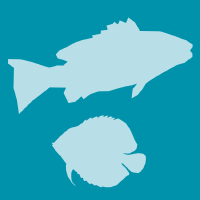Topic Editors


The Importance of Fish Phenotype in Aquaculture, Fisheries and Conservation
Topic Information
Dear Colleagues,
Aquatic ecosystems are now facing diverse pressures under the background of climate change and human activities, which bring severe uncertainty to aquaculture sustainability, fisheries management, and biodiversity conservation. It is of vital importance to comprehensively elucidate the responses of aquatic organisms to these global change factors. One of the most critical characteristics of animals, when they cope with changes, is altering their behavioral tactics and physiological processes; however, there seems to be an underestimate of these phenotypic reactions in the contexts of aquaculture, fisheries, and conservation. How to integrate fish phenotype into adaptive management of aquatic ecosystems is one of the crucial topics that has received increasing attention from scientists, decision-makers, and the public in recent years. This Topic plans to give an overview of recent advances in the field of fish phenotype-based adaptive management of aquatic ecosystems. The phenotype involves behaviors and physiology. The important roles of phenotype may be reflected by (a) applying fish behaviors to evaluate welfare status, (b) developing practical methods to decrease undesired behaviors (e.g., cannibalism) in the aquaculture context and to improve fish ecological fitness in stock enhancement and conservation projects, and (c) elucidating the dynamics and mechanisms of fish responses to ecological changes. This Topic welcomes all types of articles.
Dr. Zonghang Zhang
Prof. Dr. Xiumei Zhang
Topic Editors
Keywords
- aquaculture
- fisheries
- conservation
- biodiversity
- phenotype
- behavior
- physiology
- fish welfare
- sustainability
Participating Journals
| Journal Name | Impact Factor | CiteScore | Launched Year | First Decision (median) | APC | |
|---|---|---|---|---|---|---|

Animals
|
2.7 | 4.9 | 2011 | 16.1 Days | CHF 2400 | Submit |

Aquaculture Journal
|
- | - | 2021 | 29.3 Days | CHF 1000 | Submit |

Biology
|
3.6 | 5.7 | 2012 | 16.4 Days | CHF 2700 | Submit |

Fishes
|
2.1 | 1.9 | 2016 | 17.4 Days | CHF 2600 | Submit |

Hydrobiology
|
- | - | 2022 | 21.1 Days | CHF 1000 | Submit |

MDPI Topics is cooperating with Preprints.org and has built a direct connection between MDPI journals and Preprints.org. Authors are encouraged to enjoy the benefits by posting a preprint at Preprints.org prior to publication:
- Immediately share your ideas ahead of publication and establish your research priority;
- Protect your idea from being stolen with this time-stamped preprint article;
- Enhance the exposure and impact of your research;
- Receive feedback from your peers in advance;
- Have it indexed in Web of Science (Preprint Citation Index), Google Scholar, Crossref, SHARE, PrePubMed, Scilit and Europe PMC.

